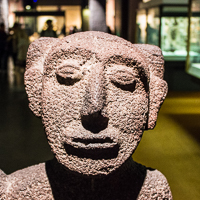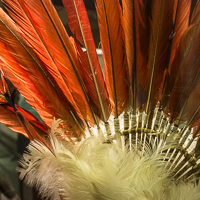
About the Collection
The museum was built to give visitors an opportunity to travel the world without leaving Manhattan. In an age before nature documentaries, scientific zoos and commercial air travel, the dioramas were the closest many would come to a rhinosaurus or an ostrich. The logical extention of this goal of simulated nature was simulated culture. Just as few would undertake a safari, few would visit the islands of the Pacific or the varieties of Africa. Across eight halls, visitors can explore the artifacts and cultures of people from Asia, Africa, Central and South America, the Pacific Rim and indigenous North Americans. Pick your favorite and immerse yourself, or see them all and hit just the highlights.

What You Will See
It is tempting to compare the cultural galleries to their companion galleries across the park at the Met, and these at the Natural History Museum can suffy by comparison. Remember, however, that this is a scientific institution, not an art collection. The artifacts here, unlike those at the Met, are not necessarily here for their beauty, craftsmanship or uniqueness. These exhibits are more interested in the basic tools, economies, beliefs and lives of the 99%, not the luxuries of the 1% or the product of a cultures few geniuses. In these galleries you will see how regular people lived at different times and in different places.

Why You Should Go
The cultural galleries are scattered throughout the museum so you are bound to stumble upon at least one of them. They are organized into geographic halls and generally focus on the historical cultures of the region--though occassional modern artifacts are included. Diorama's abound, usually to demonstrate costumes, home life or religious ceremonies. Cultural education is the goal, so there is less focus on dates and leaders and more on how each different culture structed itself to survive and prosper within its natural region. You will see lots of basic tools, plain pottery, simple attire and religious artifacts. Few individual artifacts standout as highlights--they are best appreciated as part of a larger story. Go slow and learn something.




